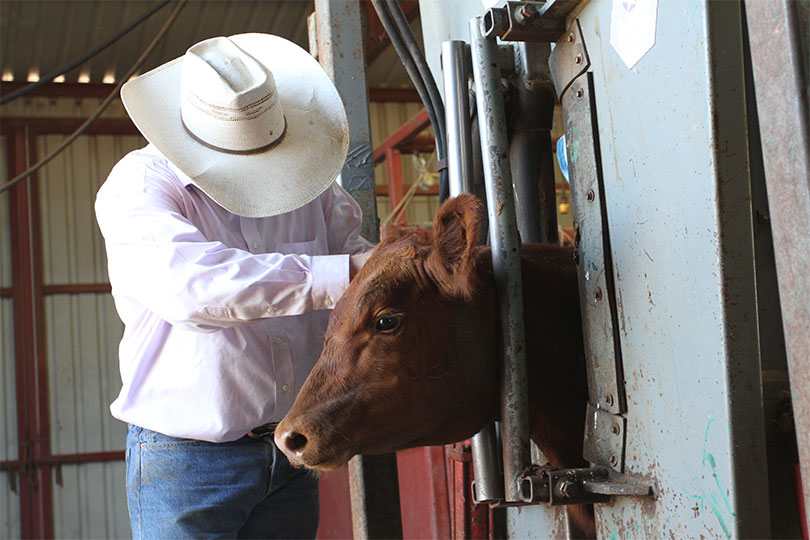The U.S. Food and Drug Administration (FDA) released new antibiotic guidance pertaining to animal drugs containing medically-important antimicrobials for use in companion and food production animals that are currently approved for over-the-counter (OTC) marketing.
Under the guidance, FDA stated several antibiotics familiar to ranchers and other livestock owners will no longer be available OTC.
The intent of the new antibiotic guidance is to ensure animal drugs that contain antimicrobials important for humans are not being overused or used incorrectly, said Texas Farm Bureau (TFB) Associate Director of Commodity and Regulatory Activities Tracy Tomascik.
“There are many antibiotics used in both human and animal medicine, and there’s concern that overuse or misuse of those medicines can contribute to antimicrobial resistance,” he said. “FDA has been updating its antimicrobial medication guidelines for several years now. This is the latest update in a string of changes to the way ranchers can access medication for livestock use.”
OTC antibiotics used in animal feed and drinking water moved to Veterinary Feed Directive (VFD) or prescription status in 2017, when the FDA first enacted VFDs for closer veterinarian oversight of antimicrobial use in food animals.
But a few antibiotics remained available OTC in the form of injectables, intramammary tubes and boluses, according to Tomascik.
Cephapirin and cephapirin benzathine, gentamicin, lincomycin, oxytetracycline, penicillin G procaine and benzathine, sulfadimethoxine, sulfamethazine and tylosin are currently available mainly as injectables but with a few intramammary tubes and boluses, he said.
By June 11, 2023, labels of those remaining OTC antibiotics will be required to read: “Caution: Federal law restricts this drug to use by or on the order of a licensed veterinarian.”
“What this means for ranchers is that they will need a veterinarian-client-patient relationship, or VCPR, in place to access those antibiotics after June 2023,” he said. “That doesn’t mean they’ll have to buy those antibiotics from their veterinarian, but they will need a prescription from the veterinarian to purchase them.”
With a valid VCPR, veterinarians may make medical judgements and prescribe medications, including antimicrobials or antibiotics, for livestock if the veterinarian believes the owner will follow their instructions.
It’s better to be prepared by having an established relationship and not need to access a veterinarian than to need a veterinarian and not be able to get in touch quickly enough, he noted.
“Although many of us prefer to worry about tomorrow’s troubles tomorrow, the year 2023 will be here before we know it. So, it’s recommended that ranchers or livestock owners who don’t already have a good relationship with a trusted veterinarian start seeking one out and establish that relationship now,” Tomascik said. “Because you’re going to need that VCPR to make sure you have access to those antibiotics when you need them.”
More information on the antibiotic guidance is available at fda.gov/animal-veterinary.


And where do you get a VCPR if there’s no large animal ( or in some cases, ANY) vet services in your area?
This is really gonna hurt us small/hobby farms and I fear many animals will be lost due to lack of care that their owners normally did. Where I am I have NO vet who does barn/farm calls and the few vets within 50miles only treat cats and dogs~ What are we supposed to do???? Who can we complain to????
This is really going to hurt us the hobby farmers the most. It’s hard to find a vet around here to do large animals. I’m afraid alot more animals will be lost.
Let’s contact our congressmen and see if they can pass legislation over riding this. Worth a try.